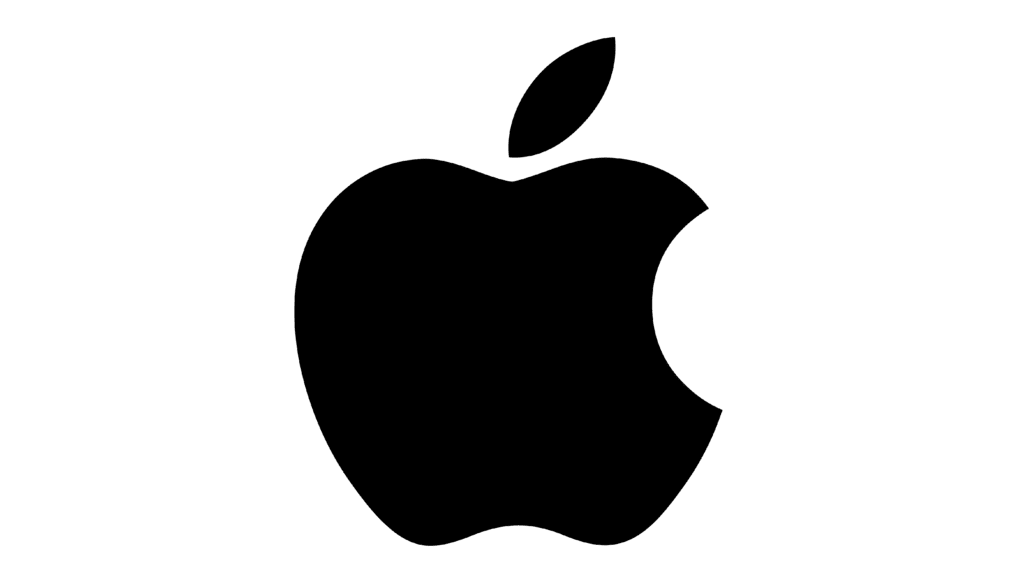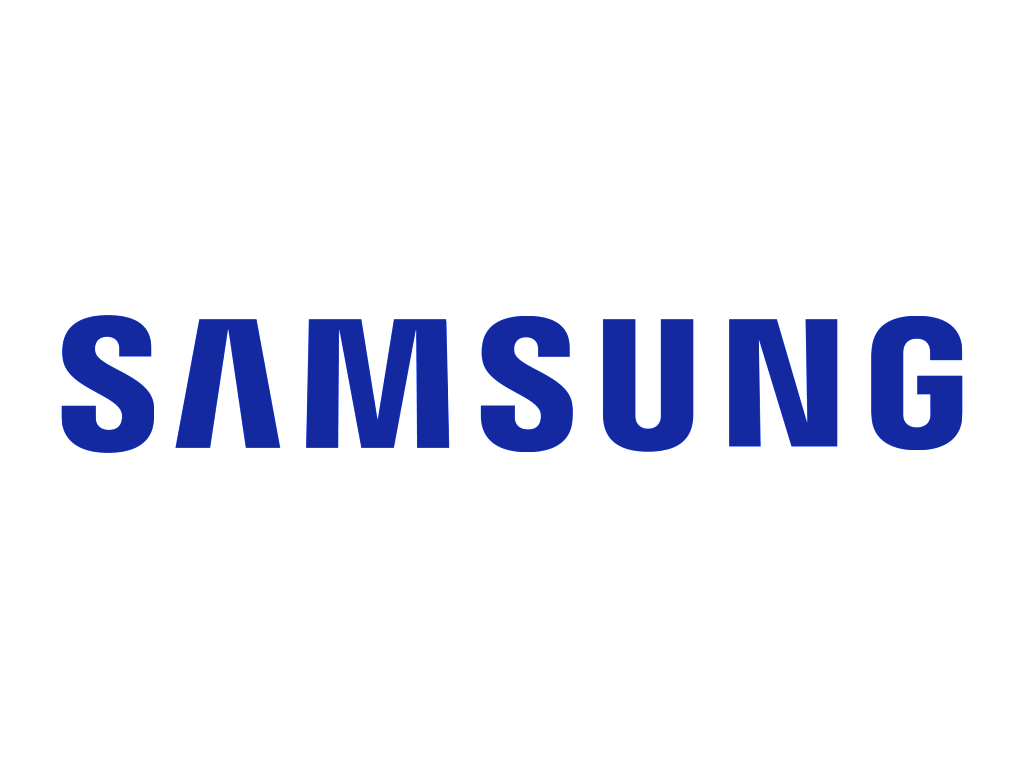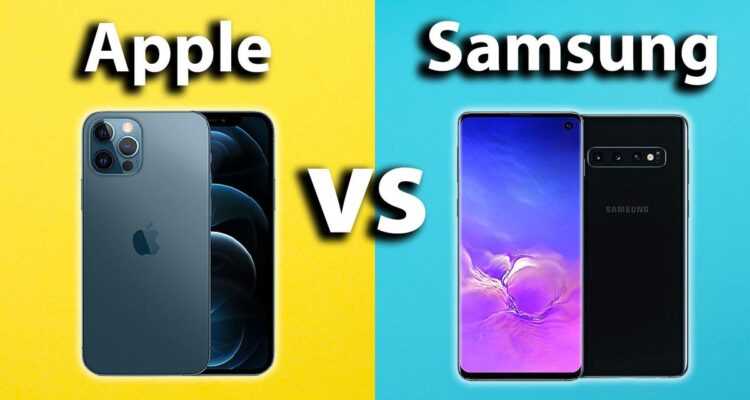
V.S.

Before we start off with this comparison game, let’s admit that both Apple and Samsung are highly innovative companies that apply their innovation priorities a bit differently. So, yes, it’s not easy to declare one clear winner of this race.
Design
Samsung’s S21/Note20 line’s colossal size has garnered mixed reviews across the market. So, if you’re looking for a smaller one in Samsung’s array, several functions from the larger models have been eliminated.
Apple, on the other hand, unveiled four separate iPhone 12 models, each with the same fundamental features except for the bigger sensor on the 12 Pro and the IBIS-stabilized primary camera sensor on the iPhone 12 Pro Max. As Samsung and Apple have always represented great product concepts in the market, thus they both score top honors in this category.
Durability
Both of these firms have a poor track record when it comes to product durability, which is why they’ve kept these devices in OtterBoxes for so long. However, in current history, Samsung and Apple have enhanced their smartphones to IP67 and IP68 classifications, making them waterproof and with significantly better glass tensile strength, making them far more durable.
App ecosystem
In terms of the native ecosystem, Apple knocks Samsung out. Samsung must rely on Google for almost all of its apps and services. So, while Google’s ecosystem receives an 8 for the range and quality of its Android service offerings, Apple receives a nine since it is believed that Apple’s wearables services are far superior to what Google currently offers. Its music environment, games, and financial solutions are also superior. In some circumstances, one could argue that Google’s services and applications as executed on iOS are as excellent if not superior to the Android counterpart. Samsung is receiving a 6, and that, too, marks a lot of generosity!
Developer ecosystem
Unless we’re talking about integrations with Samsung’s own services and its Tizen OS, which are used on Gear smartwatch and Smart TVs, Samsung does not even have a developer ecosystem. Because Google holds the Android OS, everything else is dependent on them. Hence Samsung only gets a 3 in this metric. Commercial activity is primarily targeted toward iOS in both groups. Cupertino is also far more than that in contact with its developer network than Google.
Privacy and security
It’s just as easy to call Samsung the victor in terms of platform openness as it is to declare Apple the winner in terms of privacy and security. Yes, Samsung offers Knox, which is fantastic. Apple’s track history and lack of personal records or information on users, on the other hand, bode well for its privacy endeavors.
Google, on the other side, is interested in gathering as much information about us as possible. Google is primarily an information and advertising corporation. On the Play Store, the Android environment is rife with malware, exploits, and rogue actors. With all of the many OS variations and supplier implementations over the years, the Toxic Hellstew has become almost laughable.
Because Samsung is acquiring Google’s efforts and installing its KNOX and bootloader safeguards, as well as other particular security strengthening for its devices, Google has done a pretty good job with privacy settings and security strengthening on Android 11. With iOS 14.5, Cupertino has strengthened its focus on privacy by requiring developers to seek tracking permission.
Product integration
Part of Apple’s charm is how seamlessly all of its devices integrate without the user needing to do that much, even so, to make it happen. Samsung makes everything from refrigerators to cleaners to phones to smartwatches. But there still seems to be something that isn’t working properly.
Again, this is due to Google’s Android and Chrome OS, as well as Microsoft’s Windows. They don’t have complete control over the experience. But when it comes to how well Samsung’s products should be connected with one another, the company often takes its ideas from Apple. If we’re referring to homePods, Watch, Airpods, AppleTV, iPad, iPhone, and Mac as a single product ecosystem, Apple’s stuff just works and not excels. I believe Samsung’s Gear wearables story is clearly better than Google’s WearOS, let alone Fitbit’s.
Performance
Let’s go gadget-wise in this one. There’s no disputing it: Apple’s A14 Bionic outperforms Samsung’s S20 in terms of total chip performance and benchmarks taken at the end of last year with the Qualcomm 865+. It outperformed it in every measurable category. However, Samsung is already using Qualcomm Snapdragon 888 SoCs in S21 handsets in the North American market, which is speedier in some basic benchmark categories than the A14, like memory bandwidth.
It also has 5G built into the die. The A14 Bionic, on the other hand, is partnered with an older Qualcomm X55 modem processor and must use interconnects for its own data communications pipeline. There’s no way around the fact that Apple is behind Samsung in terms of 5G system integration. The Snapdragon 888 is an octa-core (8) processor, while the A14 Bionic is a Hexa-core processor (6). They each have cores that run at around the same speed, around 3 GHz.
The A14 Bionic has a larger Tier 3 cache (8MB vs. 4MB) than the Snapdragon. The A14 Bionic, on the other hand, includes 16 dedicated deep learning cores for superior image processing techniques and computer vision, as well as four strong graphics cores. Apple’s chips are highly optimized for its platform. Apple does not source designs from these other semiconductor producers on the open market as Samsung does.
Samsung is now in the lead in displays since it has opted to focus much of its R&D resources there and retains the world’s second-largest display production operation. The company’s flagship phones include 120Hz AMOLEDs with an adaptive refresh, a feature that is currently unavailable on iPhone models.
High-frequency adaptive refresh screens, on the other hand, require a great deal of power, which is why the S21 has a substantially larger battery capacity (4000mAh vs. 2800mAh on the iPhone 12). (This could clarify why Cupertino hasn’t decided to acquire these components for its own products from Samsung or LG.) The company also makes foldable displays, which are utilized on the Galaxy Z range of devices, which are the most expensive.
So, yes, they both are truly shaking up the market in India and abroad with their exceptional product quality!
Like this post? Check out our V.S. Story Section






No Comments